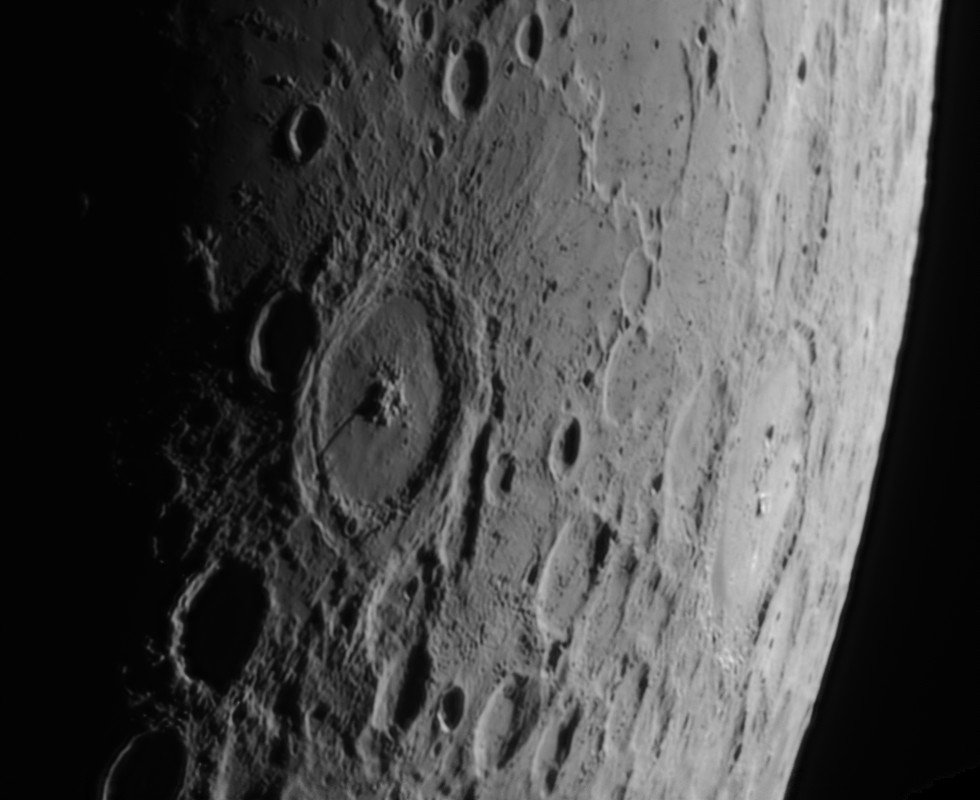
The month of April has presented numerous opportunities for high-resolution imaging of the Moon. Here the Patavius Rille can been seen clearly in the low sunlight running from the central peak to the edge of the crater itself.
'Sing to the Moon and the stars will shine'

The month of April has presented numerous opportunities for high-resolution imaging of the Moon. Here the Patavius Rille can been seen clearly in the low sunlight running from the central peak to the edge of the crater itself.
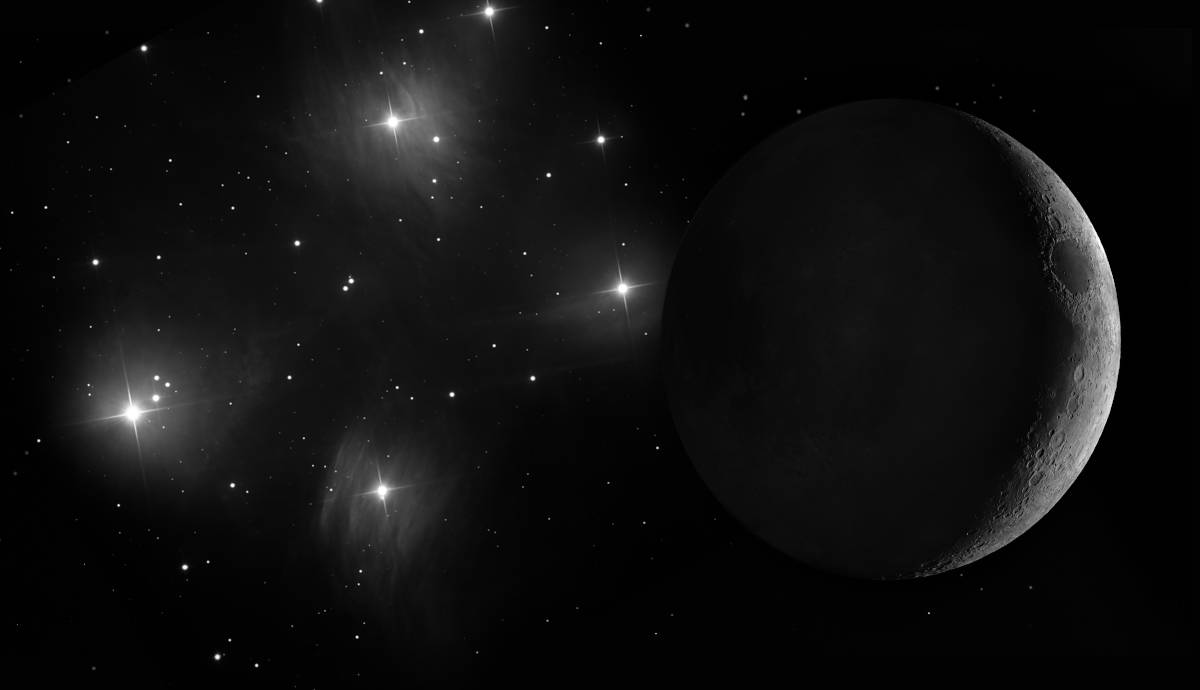
A spectacular conjunction from 1st April 2025.
Views of the day six Moon with Earthshine in HDR
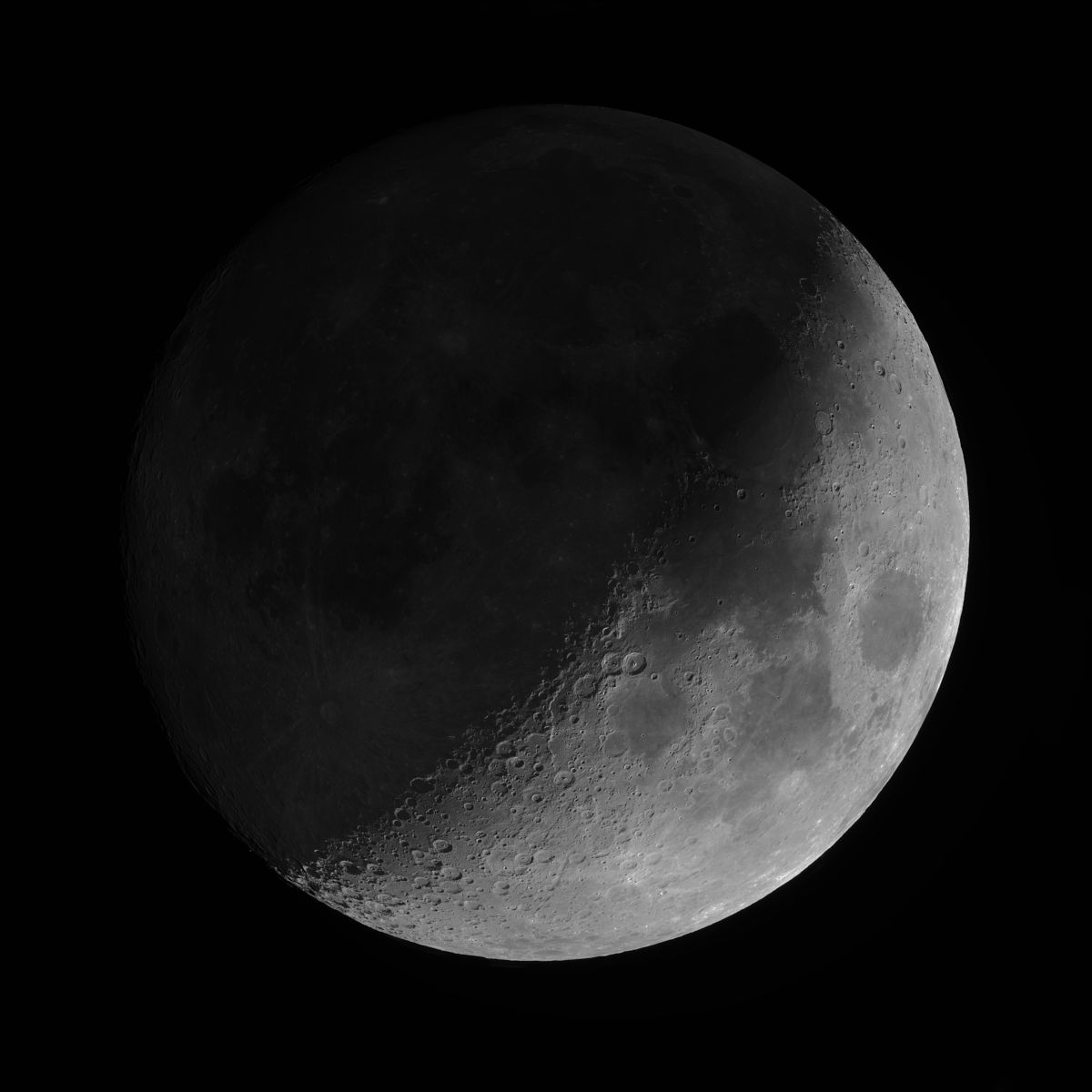
The seeing has been exceptional (for the UK) for the last few nights. This combined with the IR Pass filter seems to have helped to create the sharpset Moon photo I have ever made. Additionally, a monochrome camera was used and the combination appears to have made a significant improvement over similar images taken with a OSC camera. This is in fact two photos, the first being one of this evening’s shots of the illuminated Moon and the second another image with a different exposure…
Views of the day 11 terminator
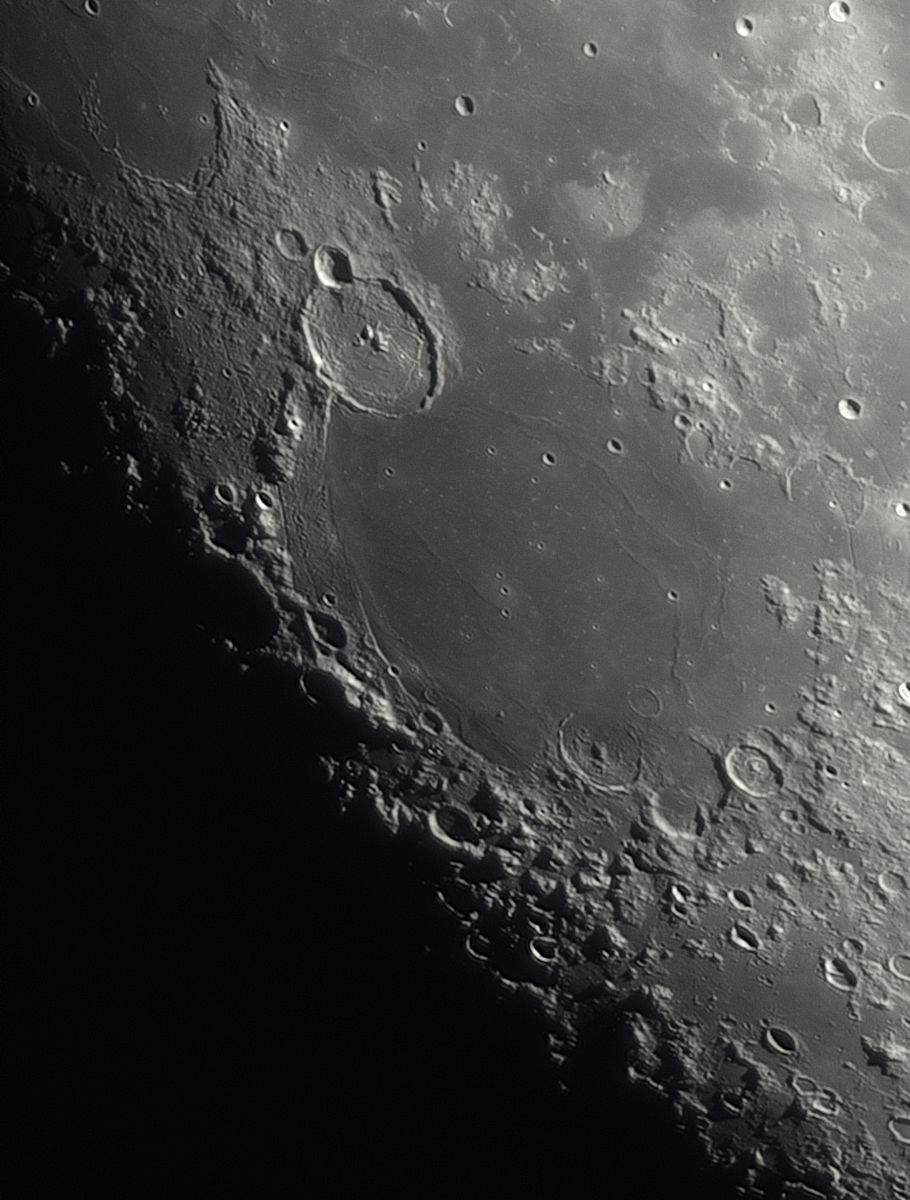
The ASI662MC has small 2.9 micron pixels which give excellent resolution, especially in a long scope such as the CC. The 10th Jan was the stablest and most transparent evening we have had for weeks if not months and the Moon was really high at over 65° in altitude. The 12th was less clear but still gave a really good view of the full Moon.
Occultation on 21st Aug 2024 at 4am
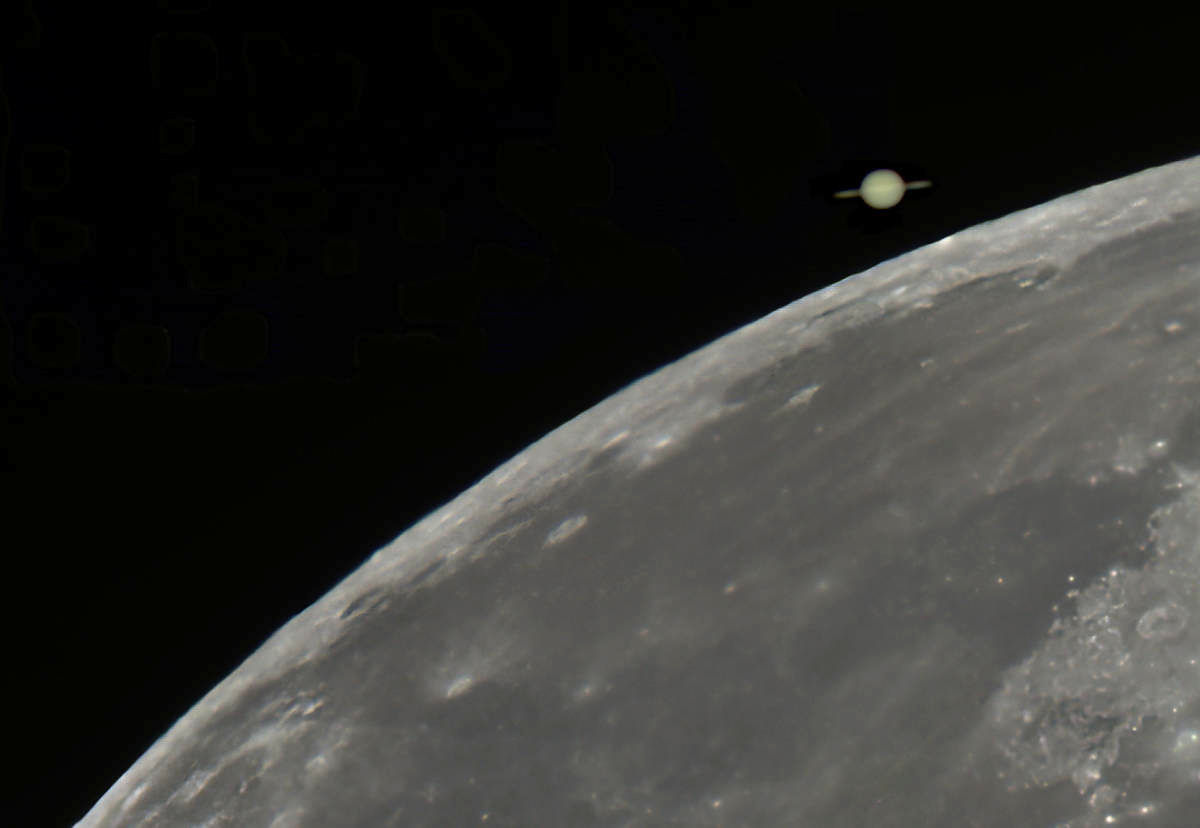
Saturn disappeared at 04h27 and reappeared at 05h20 BST. Amazingly the blanket of thin swirling cloud lifted 10 minutes before the point of ingress. The night was very windy however and the atmosphere was extremely wobbly precluding any chance of capturing surface details on Saturn. The difference in brightness between Saturn and the Moon necessitated creating a composite image to show both bodies visually.
Sketch made on Moon day 11
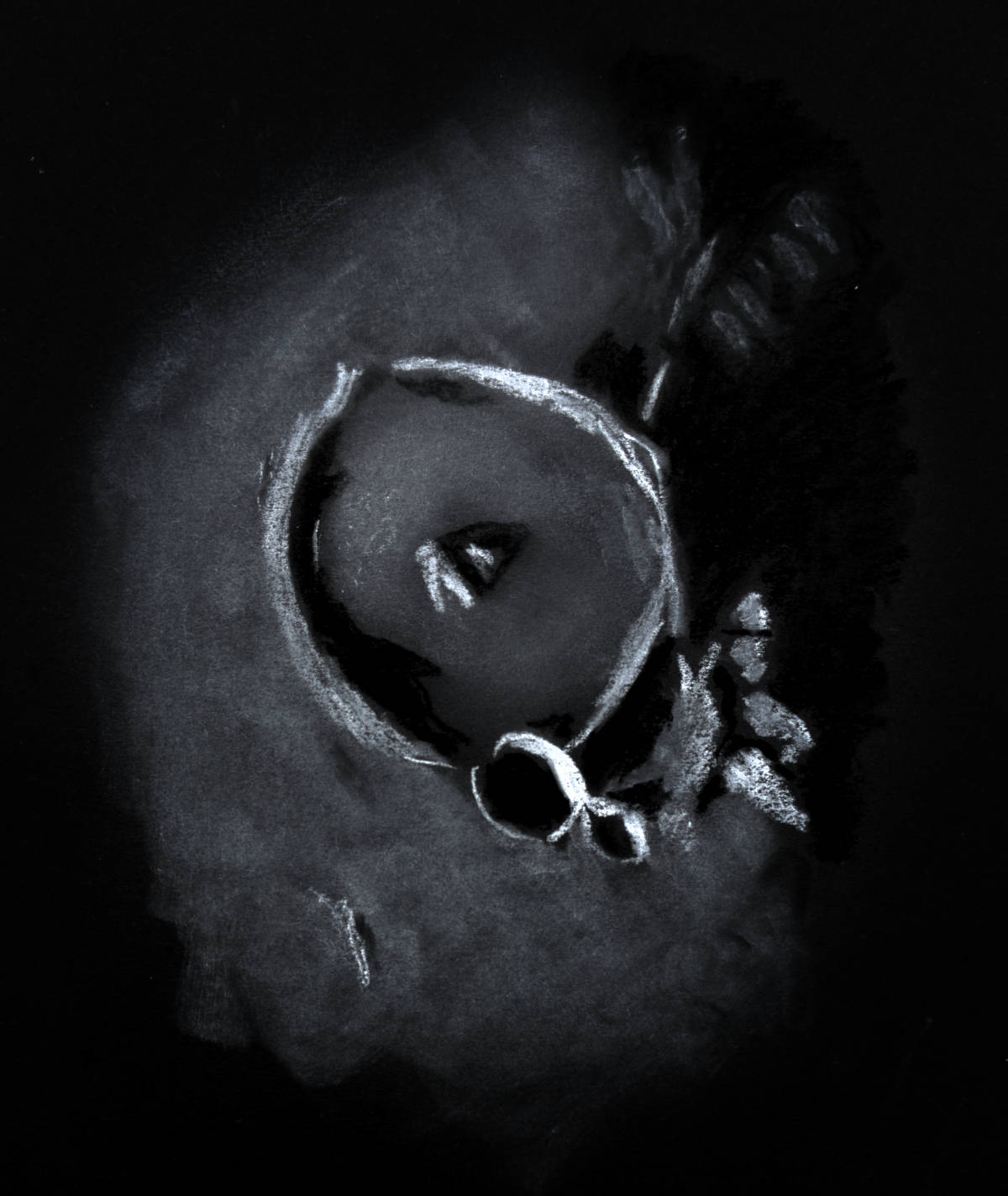
Sketched with white and black charcoal on black paper at the eyepiece over 30 mins between 20h and 21h UT. Again, the sketch was started before the fall of darkness which makes the initial outlining of the main elements on the paper somewhat easier. It was a dramatic sight in the low, slanting light at the Terminator. The terraces on the the crater walls were visible at times though no detail on the surface of the central plain was evident in the conditions.
Sketch made on Moon day 8
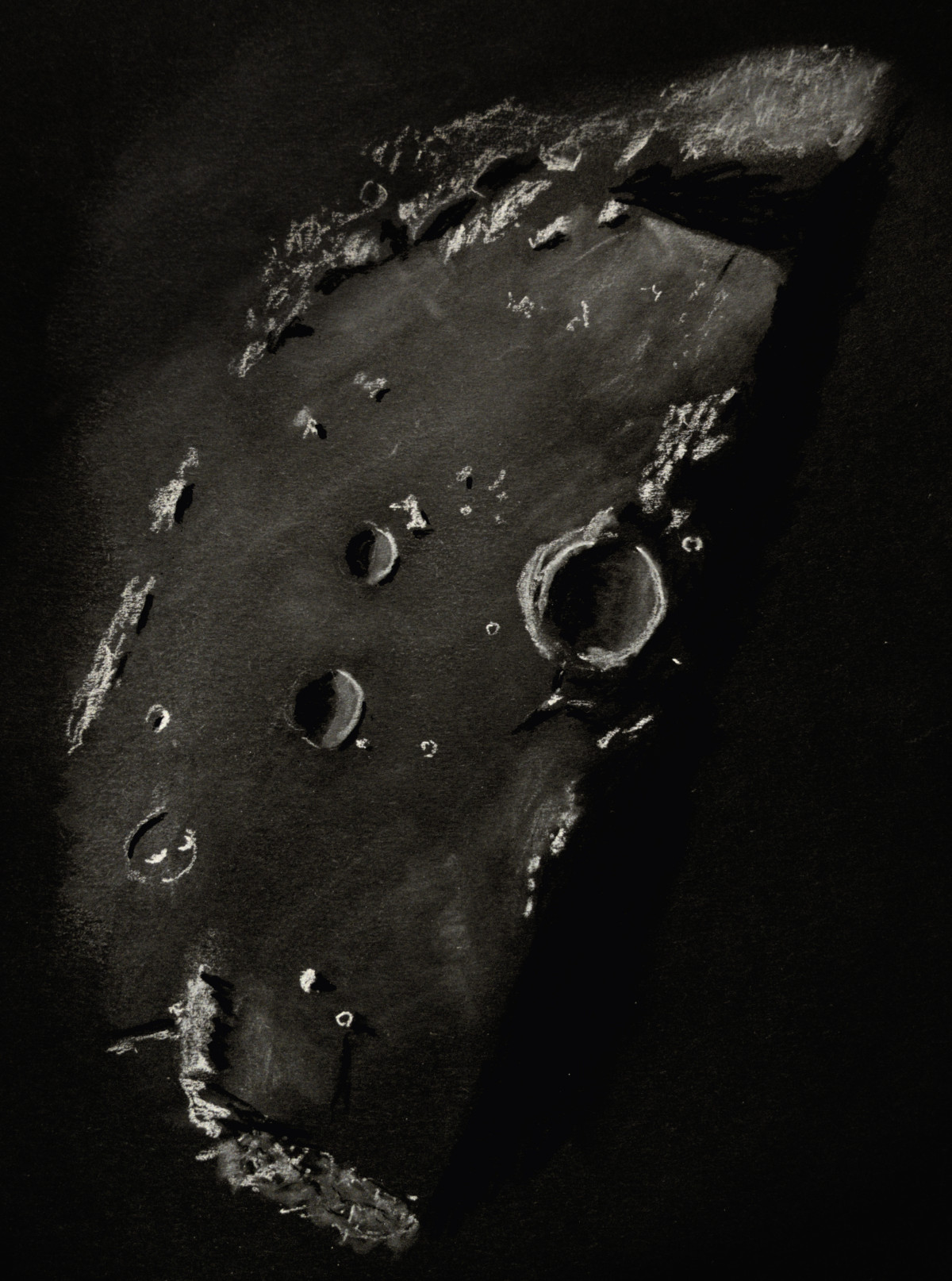
Sketched with white and black charcoal on black paper at the eyepiece over 30 mins between 20h and 21h UT, so the sketch was in fact started before the fall of darkness. Archimedes lies exactly on the illuminated side of the terminator.
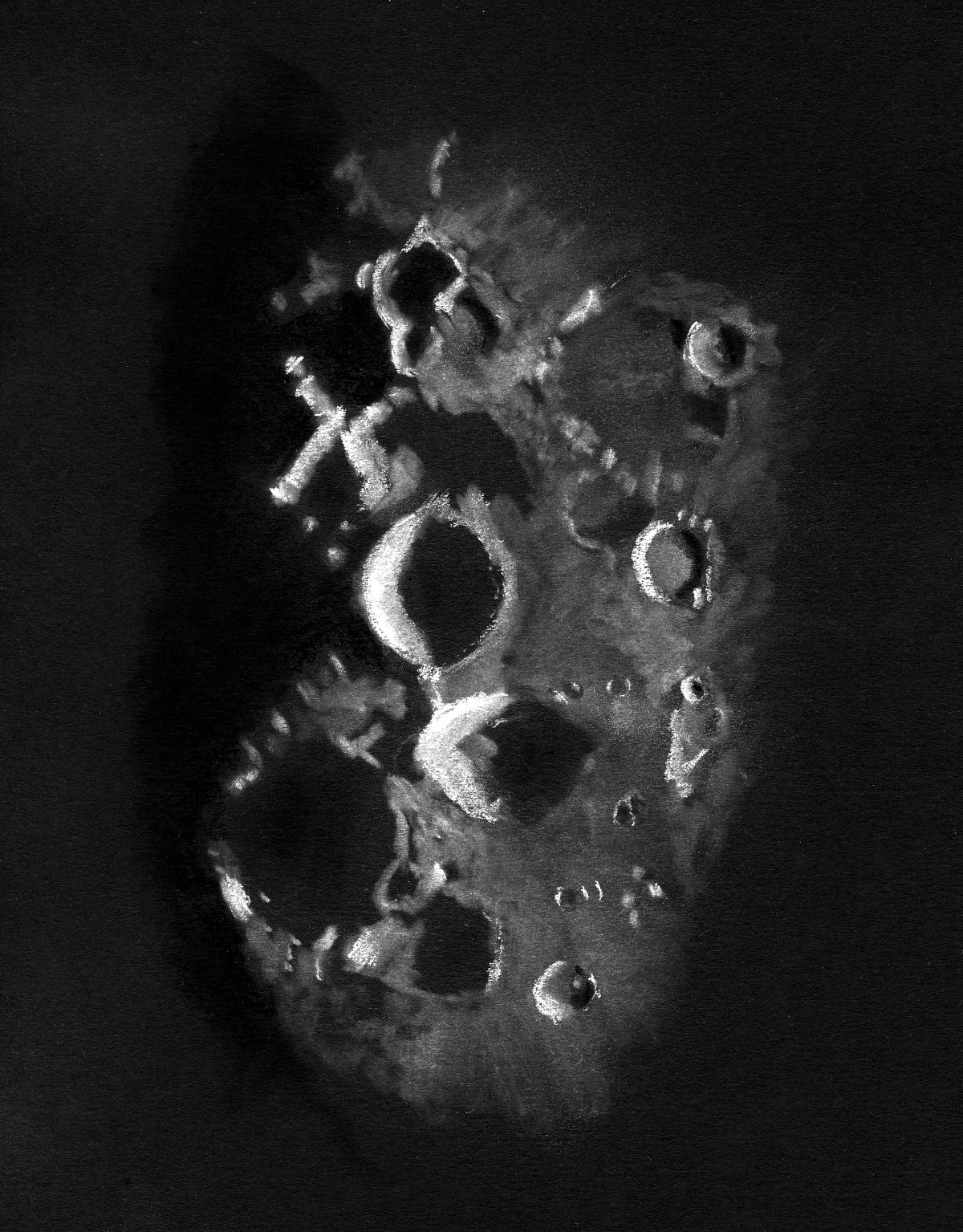
Photographed with the Moon at first quarter at precisely the day/time that this transient effect is visible. I was looking along the terminator and attempting to identify some of the prominent craters when all of a sudden this jumped out at me. I swear that if I had tried to find it it would have taken hours! The effect is actually only visible for approx four hours or so on one day a month when the Moon is at first quarter (lunar day 6.9). The next date it is visible is the 17th March by my…
An evening of superb views and experiments in image making.
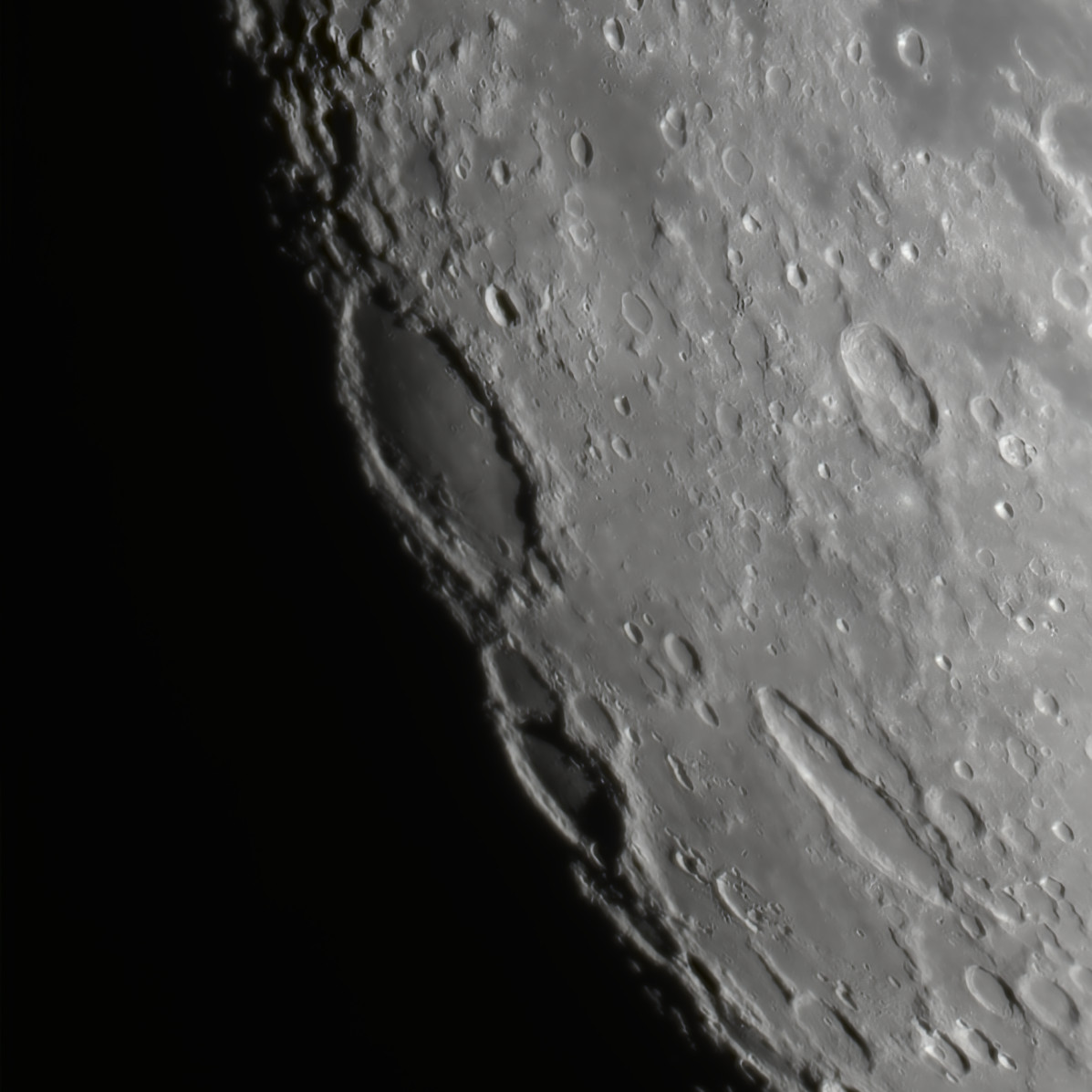
Lucky imaging: best 25% frames from 10000 video frames.
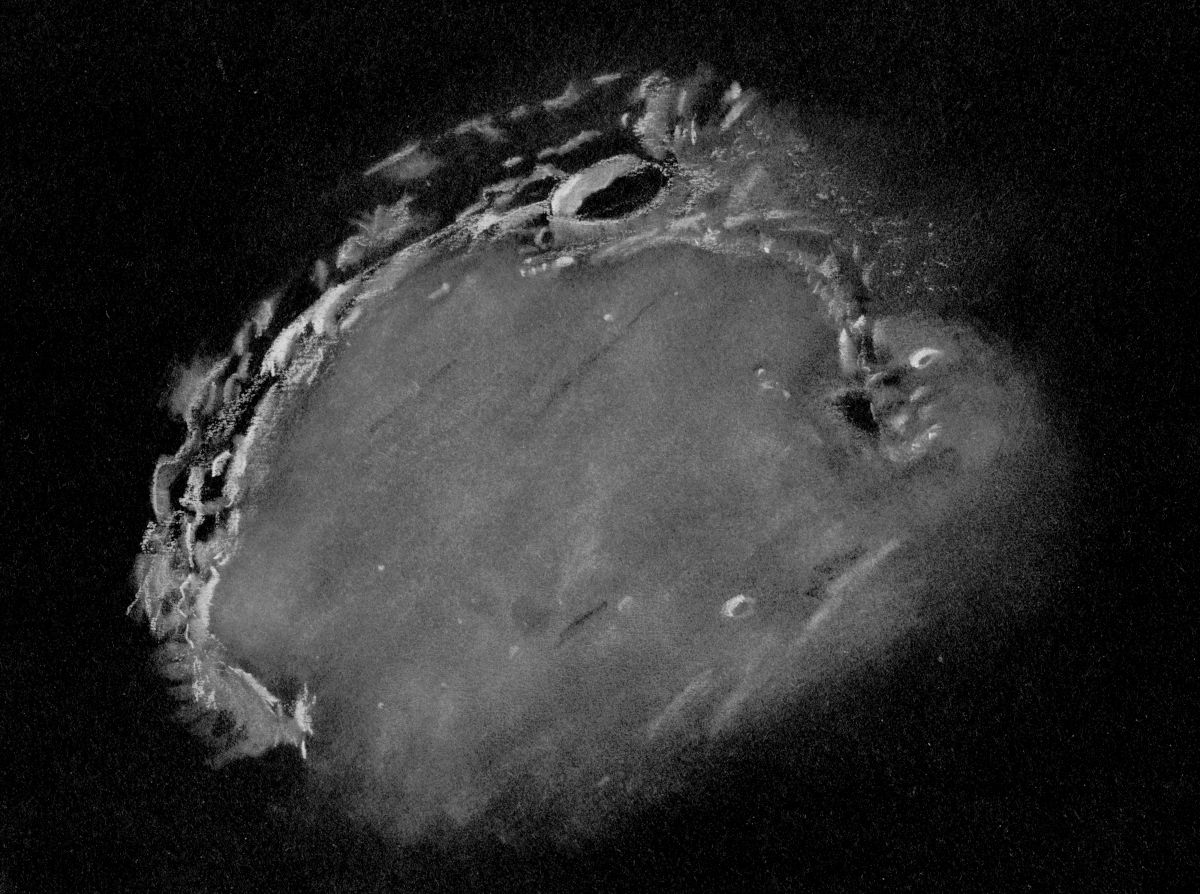
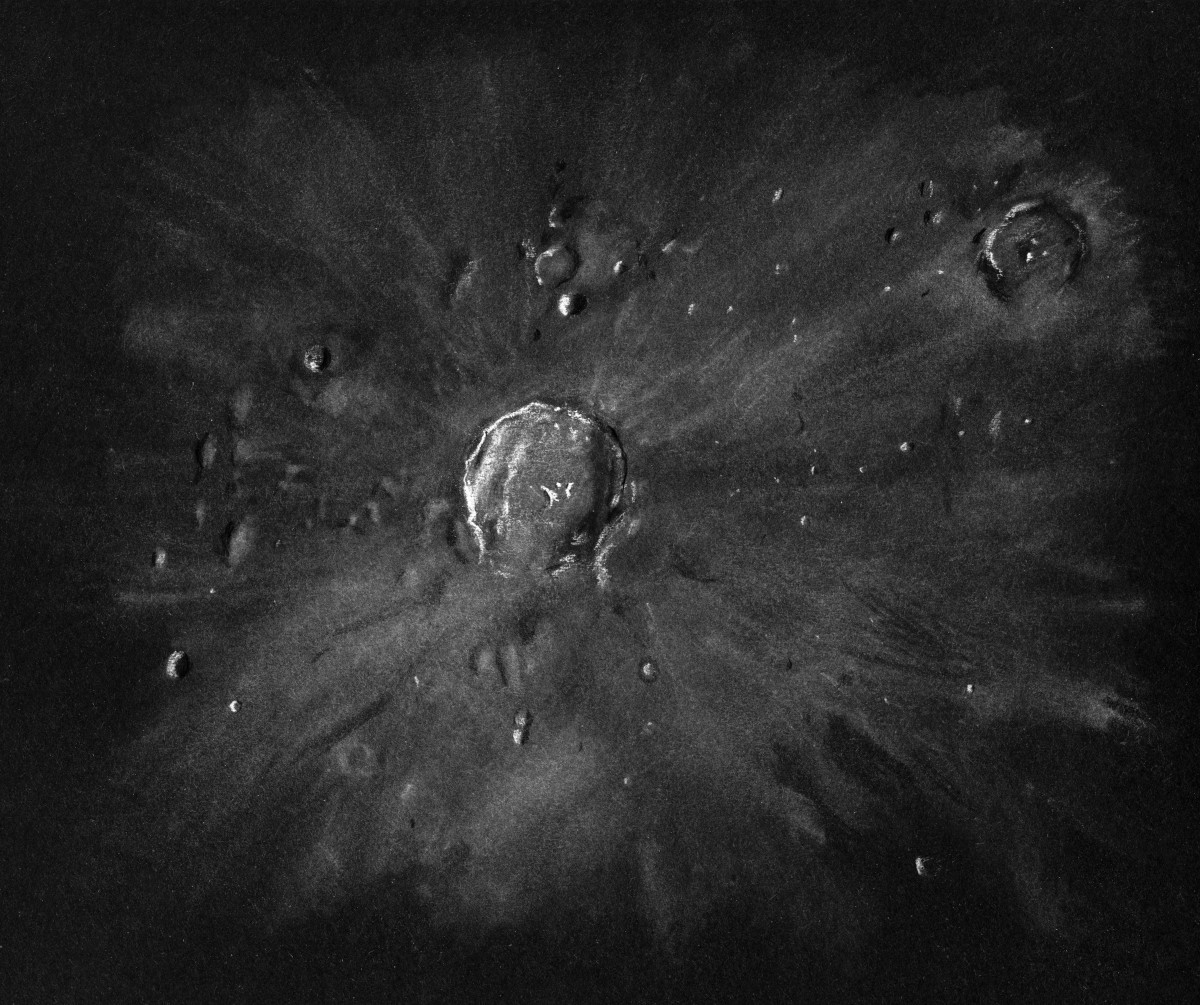
The huge crater Copernicus displays clear ejecta rays and lines of mini craters caused by the scattering of debris from the meteor impact that created it many millions of years ago.